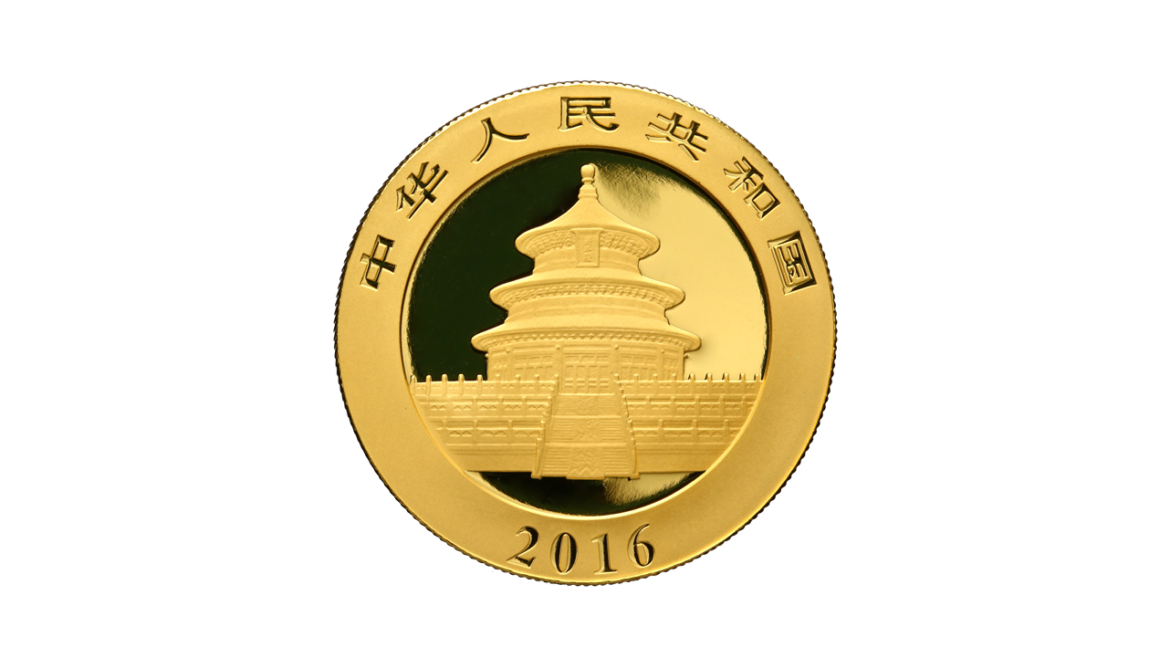Gold has all the potential to go unprecedentedly high. But silver will be gold on
Site:
Precious metals news
Silver prices are experiencing a surge, influenced by a combination of a weakening dollar, speculation that the Federal Reserve might pause interest rate hikes, and market expectations of a possible dovish shift in the central bank's future monetary policy. These factors are collectively impacting silver's future price trajectory.
 Goldman Sachs Analysts Said in a Note Sunday That Gold’s “Shine Is Returning”
Goldman Sachs Analysts Said in a Note Sunday That Gold’s “Shine Is Returning”Nov 27, 2023 - 11:59:58 PST
Goldman Sachs analysts predict a brighter future for gold in 2024, linking potential price increases to U.S. real rates and dollar trends. They anticipate sustained consumer demand from China and India, along with central bank purchases, to counter any downward pressure. Similarly, Bank of America's commodities team expects gold prices to rise from the second quarter of 2024, driven by lower real rates due to Federal Reserve rate cuts.
 Economists Anticipate Continued High Rates Due to Stubborn US Core Inflation
Economists Anticipate Continued High Rates Due to Stubborn US Core InflationNov 27, 2023 - 11:52:54 PST
Bloomberg's latest survey indicates the Federal Reserve's core inflation measure will stay elevated, likely keeping interest rates high into 2024. The core index is expected to be 2.5% by end of 2024, suggesting a prolonged period of tight monetary policy. Overall inflation is projected to decline, but economic growth is forecasted to slow, with a peak unemployment rate of 4.4%. The survey, conducted between Nov. 17-22, included 73 economists.
The German hyperinflation after World War I exemplifies the perils of excessive government control over currency. Initially, to fund war efforts, Germany removed the mark from the gold standard, triggering massive inflation. Post-war, efforts to manage reparations and increased spending further escalated the crisis, leading to skyrocketing inflation. This case illustrates the dangers when central banks fund government deficits, as seen with the Federal Reserve's actions during the Covid crisis. The key lesson is the need for a separation between government and money to avoid hyperinflationary scenarios.
Nov 27, 2023 - 11:39:53 PST
The U.S. dollar's status as the world's reserve currency is waning due to various factors, including recent sanctions against Russia and global dissatisfaction with U.S. monetary policy. Countries like Brazil, Argentina, Bangladesh, and India are exploring alternatives like the Chinese yuan and Bitcoin for trade and payments. The dominance of the U.S. in global finance and trade, combined with the strong dollar's impact on emerging economies, is prompting a shift away from dollar dependency. Additionally, changes in global oil trade and strained U.S.-Saudi relations could further erode the dollar's reserve currency status.
Nov 27, 2023 - 08:11:03 PST
The "Inflation Reduction Act," focused on green energy, is expected to cause Medicare insurance premiums to surge by 42-57% in 2024. Despite aiming to lower healthcare costs, the Act may significantly increase Part D premiums for most enrollees. Reports predict steep hikes in states with large senior populations, contrary to earlier projections of premium declines. This could impose a considerable financial strain on retirees dependent on Medicare's Part D coverage.
Nov 27, 2023 - 08:06:44 PST
New home sales in the U.S. housing market fell more than expected in October, dropping 5.6% month-over-month. This decline comes amidst the lowest housing affordability since the early 1980s and a significant fall in home-purchase applications. The median new home price also decreased by 17.6% year-over-year. This trend raises concerns about Federal Reserve policies impacting housing affordability and the middle class's wealth.
Nov 27, 2023 - 07:58:14 PST
The volume of delinquent Commercial Mortgage-Backed Securities (CMBS) rose by 49.4% over 10 months through October, reaching $27.91 billion, or 5.07% of the total CMBS market. This spike is mainly due to a 261% increase in office sector delinquencies, with $9.59 billion in loans now late. Factors include declining office occupancy rates and the high cost of interest-rate cap agreements for loans with floating rates. Rising interest rates are also significantly affecting residential mortgage payments.
 To Fund Record Black Friday Purchases, Consumers Use 'Buy-Now, Pay-Later' Option
To Fund Record Black Friday Purchases, Consumers Use 'Buy-Now, Pay-Later' OptionNov 27, 2023 - 07:31:47 PST
The popularity of buy-now, pay-later (BNPL) options is rising as consumers, grappling with other debts like student loans and credit cards, face the highest interest rates in years. These short-term loans offer a way to spread out payments over several months. The Federal Reserve Bank of New York notes that younger consumers, often with limited access to credit cards, are increasingly opting for BNPL services.
 ‘If You’re in a Hole, Stop Digging,’: 25% Of Americans Still Have Holiday Debt From Last Year
‘If You’re in a Hole, Stop Digging,’: 25% Of Americans Still Have Holiday Debt From Last YearNov 27, 2023 - 07:27:47 PST
About 25% of Americans are still paying off 2022 holiday debt, per WalletHub's survey. With higher interest rates, now nearly 21% up from 16% since March 2020, credit card debt is becoming costlier and harder to pay off. Bankrate's Ted Rossman advises against accruing more debt, noting even a $1,000 balance could lead to 40 months of debt and $390 in interest at the current rate if only minimum payments are made.
Chinese investors are turning to gold.China Daily called the demand for gold "robust" through the first three quarters of 2023 and said it is expected to continue "as economic and geopolitical uncertainties may drive up investors' purchases of safe-haven assets."
 Gold Reaches 6-Month Peak, Fueled by Anticipated Fed Pause and Weaker Dollar
Gold Reaches 6-Month Peak, Fueled by Anticipated Fed Pause and Weaker DollarNov 27, 2023 - 05:39:00 PST
Gold prices reached a six-month high, surpassing $2,000 per ounce, driven by a weaker dollar and expectations that U.S. interest rate hikes may soon end. Spot gold increased by 0.5% to $2,012.33 per ounce, having earlier hit $2,017.82, its highest since May 16. U.S. gold futures also rose by 0.5% to $2,013.10. The dollar's 0.1% decline against major currencies, reaching a two-month low last week, has made gold more affordable for holders of other currencies.
Nov 27, 2023 - 05:35:28 PST
The U.S. government's national debt has surged by over $102.17 billion in just 15 days, growing from $33.637 trillion to $33.740 trillion as of November 16th, according to the FiscalData system. Concurrently, the Heritage Foundation's EJ Antoni criticizes the Biden administration for excessive spending, warning of a looming financial crisis where the government may struggle to pay its bills. The recent downgrade in the U.S. debt outlook underscores the growing risk for taxpayers and bondholders, including those with retirement funds.
A Federal Reserve Bank of Boston study revealed that as of July, consumers with household incomes below $50,000 and delinquent accounts were using 80 to 90 percent of their available credit. This high utilization leaves them with minimal credit to buffer against financial hardships. The report also noted that across all income groups, the average credit card utilization rates were higher than the levels seen in February 2020.
Biden's declining political standing, just 11 months before Election Day, is attributed to several factors: a loss of support among traditionally reliable Democratic voters, particularly young people; the escalation of conflict in the Middle East; and the emergence of independent and third-party candidates who pose a threat to draw votes away from both Biden and Trump.
A surge of congressional resignations across parties and chambers is occurring amidst significant dysfunction in Capitol Hill, primarily driven by House Republicans. The House G.O.P. majority has recently ousted its leader, faced an internal battle for a new speaker, and struggled with federal funding issues. Hardline right-wing members are opposing viable spending bills and criticizing their new leader for collaborating with Democrats to prevent a government shutdown.
Nov 27, 2023 - 05:11:51 PST
Major banks like PNC Bank and JPMorgan Chase are closing multiple branches across various states, continuing a trend of increasing branch shutdowns in recent years. In one week, PNC Bank filed to close 19 branches, and JPMorgan Chase filed for 18 closures in different states. Citizens Bank plans to shut eight branches, while U.S. Bank has seven closures in the pipeline. Bank of America is closing five branches, and Citibank along with several smaller banks are also reducing their physical presence, totaling 64 branch closures filed recently.
The financial crisis that kicked off in March continues to bubble under the surface.Total outstanding loans in the Federal Reserve's bank bailout program jumped by just over $5 billion in November.
 GLOBAL SILVER MINE SUPPLY CONTRACTS WITH NEW PROJECTS: 60 Moz Of New Silver Supply Could Halt Peak In 2016
GLOBAL SILVER MINE SUPPLY CONTRACTS WITH NEW PROJECTS: 60 Moz Of New Silver Supply Could Halt Peak In 2016November 27, 2023
Can new mining projects in the next few years halt the ongoing decline in the global silver mine supply? Logic suggests this... but it hasn't been the case since the world's silver production peaked in 2016. Even with 60 million oz of new silver supply, global mine production grinds lower...
It's one thing when the Western wind power companies lose money, but another thing entirely when it happens to the largest firm in China. Why? China is supposed to be the lowest-cost producer in the world. This is just another nail in the coffin for the Green Energy Industry...




